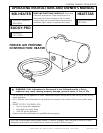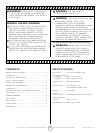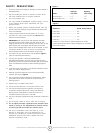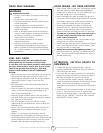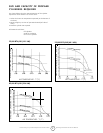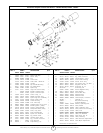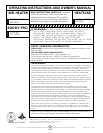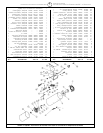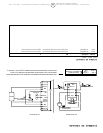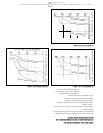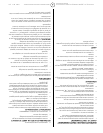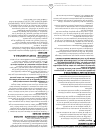
OPERATING PRECAUTIONS
This is a propane, direct-fired, forced air heater. It's intended use
is primarily temporary heating of buildings under construction,
alteration or repair.
Propane is heavier than air. If propane leaks from a connection
or fitting, it sinks to the floor, collecting there with the
surrounding air, forming a potentially explosive mixture.
Obviously, propane leaks should be avoided, so set up the
propane supply with utmost care. Read enclosed Odor Fade and
Propane Sheet for additional information about detecting
propane leaks. Leak check new connections or reconnections
with a soap and water solution and follow all connection
instructions herein. Also, ask your propane dealer for advice on
the propane application and supply installation and ask him to
check it if there are any questions.
This heater was designed and certified for use as a construction
heater in accordance with ANSI Standard Z83.7/CGA 2.14-2000.
Check with your local fire safety authority if you have any
questions about your applications. Other standards govern the
use of fuel gases and heat producting products in specific
applications. Your local authority can advise you about these.
Direct-Fired means that all of the combustion products enter the
heated space. Even though this heater operates very close to 100
percent combustion efficiency, it still produces small amounts of
carbon monoxide. Carbon monoxide (called CO) is toxic. We can
tolerate small amounts but not a lot. CO can build up in a heated
space and failure to provide adequate ventilation could result in
death. The symptoms of inadequate ventilation are:
• headache
• dizziness
• burning eyes and nose
• nausea
• dry mouth or sore throat
So, be sure to follow advice about ventilation in these operating
instructions.
Forced Air means that a blower or fan pushes the air through
the heater. Proper combustion depends upon this air flow;
therefore, the heater must not be revised, modified or operated
with parts removed or missing. Likewise, safety systems
must not be circumvented or modified in order to operate
the heater.
When the heater is to be operated in the presence of other
people the user is responsible for properly acquainting those
present with the safety precautions and instructions, and of the
hazards involved.
3
Operating Instructions and Owner’s ManualEnerco Group, Inc.| Forced Air Propane Construction Heater
SPECIFICATIONS
Model: ................................ 55FAV .............................. 85FAV ................................ 125FAV
Rating:............................. 30,000-55,000 ................ 50,000 – 85,000 ............... 75,000 – 125,000
Btu/Hr Btu/hr Btu/hr
(8.8-16.1 kW) (14.6 – 25.0 kW) (21.9 – 36.6 kW)
Fuel Consumption:.......... 1.4-2.5 #/hr ..................... 2.3 – 3.9 #/hr .................... 3.5 – 5.8 #/hr
(.64-1.1 kg/hr) (1.04 – 1.77 kg/hr) (1.59 – 2.63 kg/hr)
Fuel Orifice Port No.: ....... 18 ..................................... 18 ....................................... 18
Fuel Orifice Port Size: ...... 0.0196"............................ 0.0240”.............................. 0.0295"
(0.50mm) (0.6024mm) (0.75mm)
Heated Air Output: ............ 300 cfm ........................... 350 cfm ............................. 350 cfm
(8.49 cmm) (9.91 cmm) (9.91 cmm)
Average Air Temp. Rise: .. 200°F (111°C) ................. 200°F (111°C)................... 400°F (232°C)



